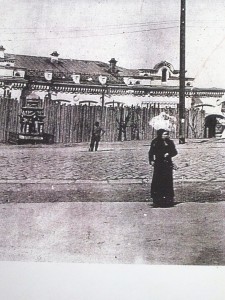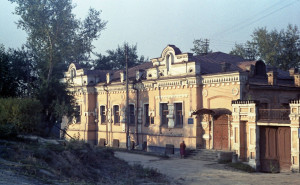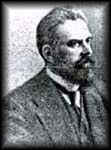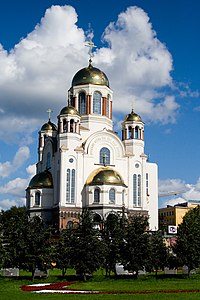
 Nicholas Ipatiev was the owner of the infamous mansion which was renamed “The House of Special Purpose” by the Bolsheviks and was the home were the Romanov family was imprisoned and then murdered on July 17, 1918. He was ousted from the house where he also kept his offices- which later served as the death chamber. He was a prosperous engineer-architect. The Bolsheviks built a strong barricade around the house and several gun stations. It was an impentrable prison. After the executions, when the Whites recovered Ekaterinburg, Nicholas asked to return to his house- he did so but only briefly. He fled to Japan, then settled in Prague, where he later died. There are discrepancies re his date of death 1923- or 1938? I tend toward the latter.
Nicholas Ipatiev was the owner of the infamous mansion which was renamed “The House of Special Purpose” by the Bolsheviks and was the home were the Romanov family was imprisoned and then murdered on July 17, 1918. He was ousted from the house where he also kept his offices- which later served as the death chamber. He was a prosperous engineer-architect. The Bolsheviks built a strong barricade around the house and several gun stations. It was an impentrable prison. After the executions, when the Whites recovered Ekaterinburg, Nicholas asked to return to his house- he did so but only briefly. He fled to Japan, then settled in Prague, where he later died. There are discrepancies re his date of death 1923- or 1938? I tend toward the latter.
Demolition
As early as 1923, the photographs of the fenced house were disseminated in the Soviet press under the label of “the last palace of the last Tsar”. In 1927, the house was designated a branch of the Ural Revolution Museum. It then became an Agricultural School before taking on new life in 1938 as an Atheist Museumuring this period it was customary for party appartchiks to arrive in large tour groups, posing before the bullet-damaged wall of the cellar in which the former Tsar and his family had been murdered. In 1946 it was taken over by the local Soviets. In 1974 it was formally listed as a Historical-Revolutionary Monument. But, to the embarrassment of the government, it was steadily becoming a place of pilgrimage for those who wished to honour the memory of the imperial family.
In 1977, as the sixtieth anniversary of the Russian Revolution approached,the Soviets decided to take action, declaring that the house was not of ‘sufficient historical significance’, and ordering its demolition. The task was passed to Boris Yeltsin, chair of the local party, who had the house demolished in September 1977. He later wrote in his memoirs, published in 1990, that “sooner or later we will be ashamed of this piece of barbarism.” But, despite this action, the pilgrims kept coming, often in secret and at night, leaving tokens of remembrance on the vacant site. After theSoviet Union dissolved in 1991, the Church on te Blood (term for all churches built on sites of assassination and execution) was built on the site and is now a major place of pilgrimage. I visited in 2003 as it was being completed and will describe that visit in my next book.


